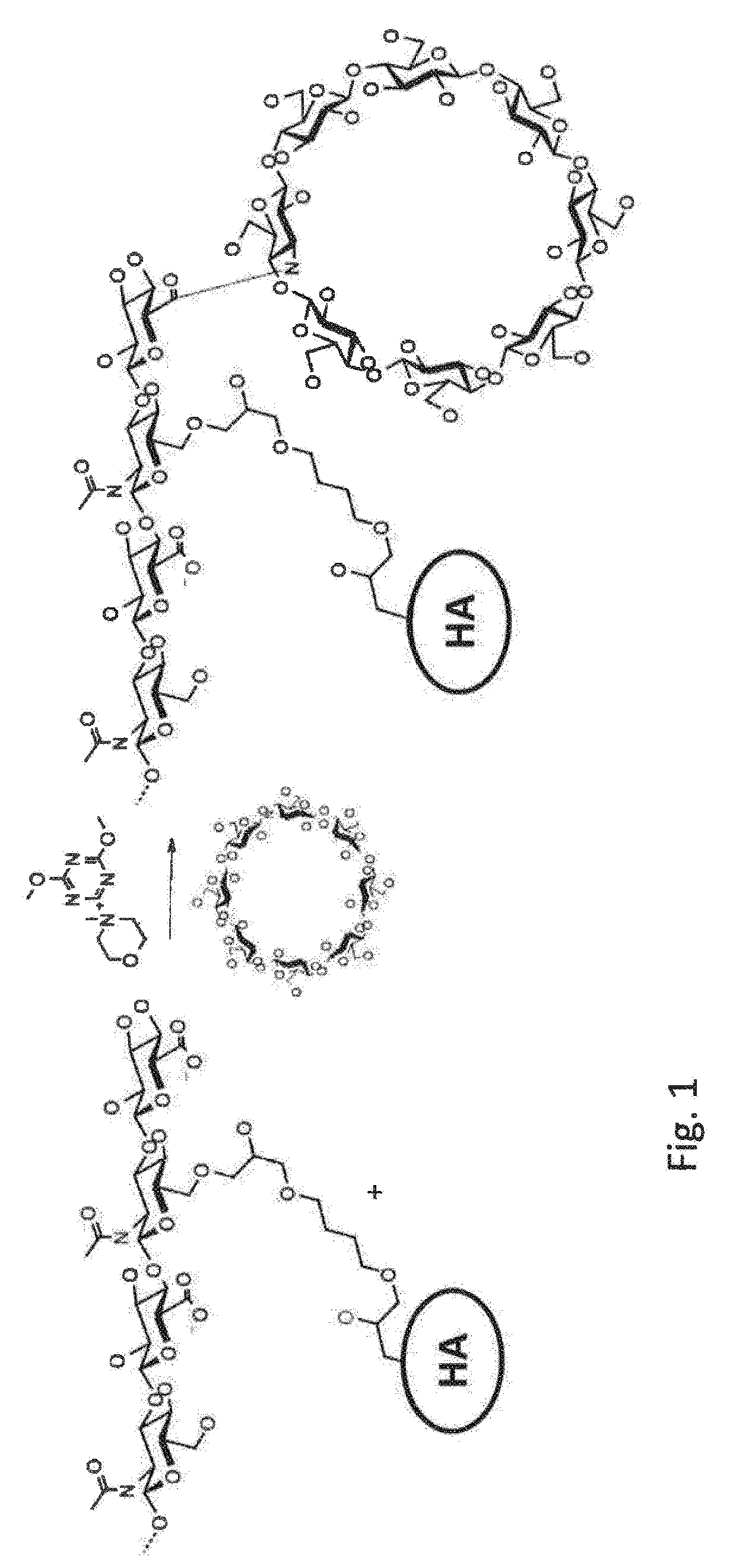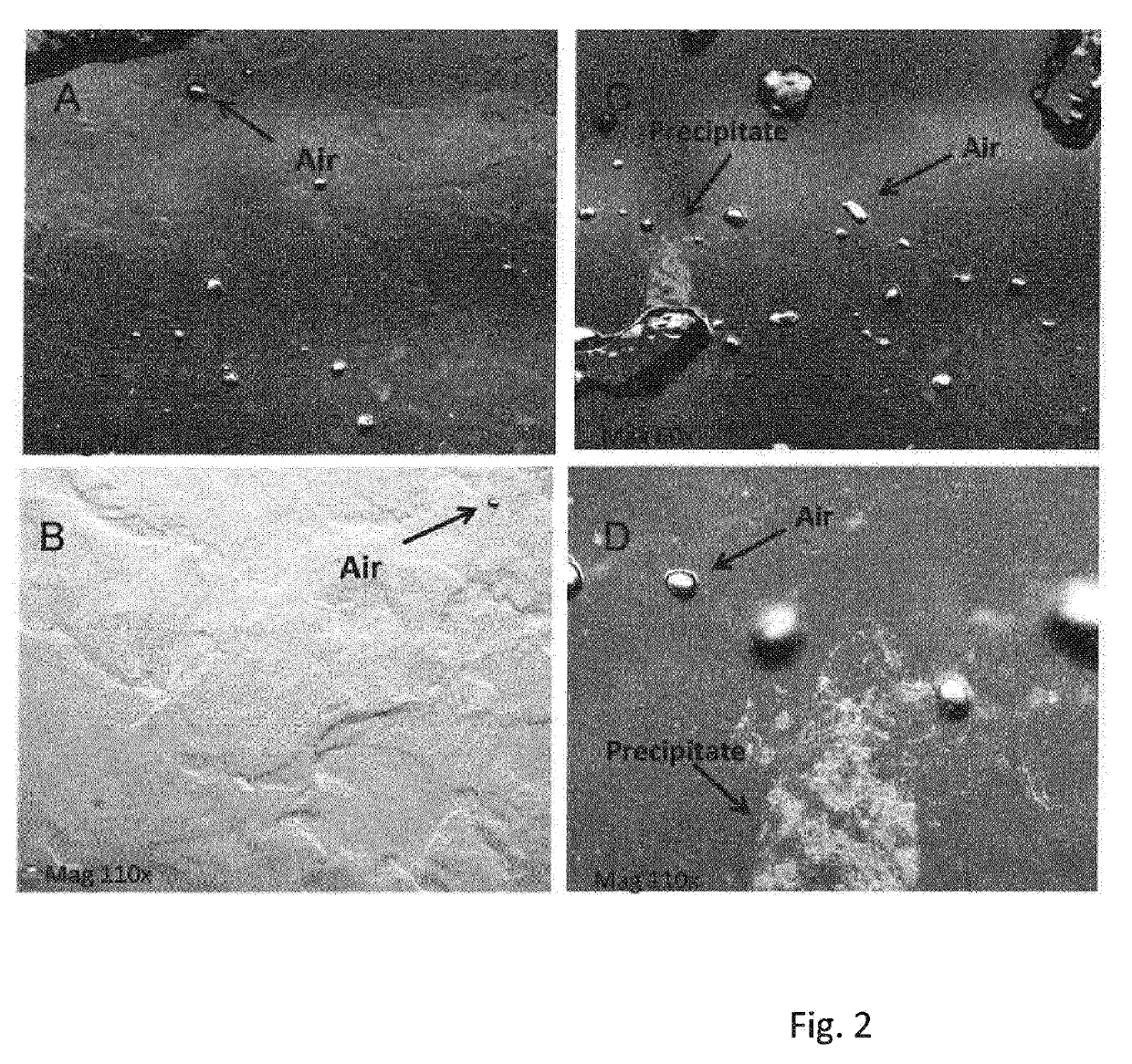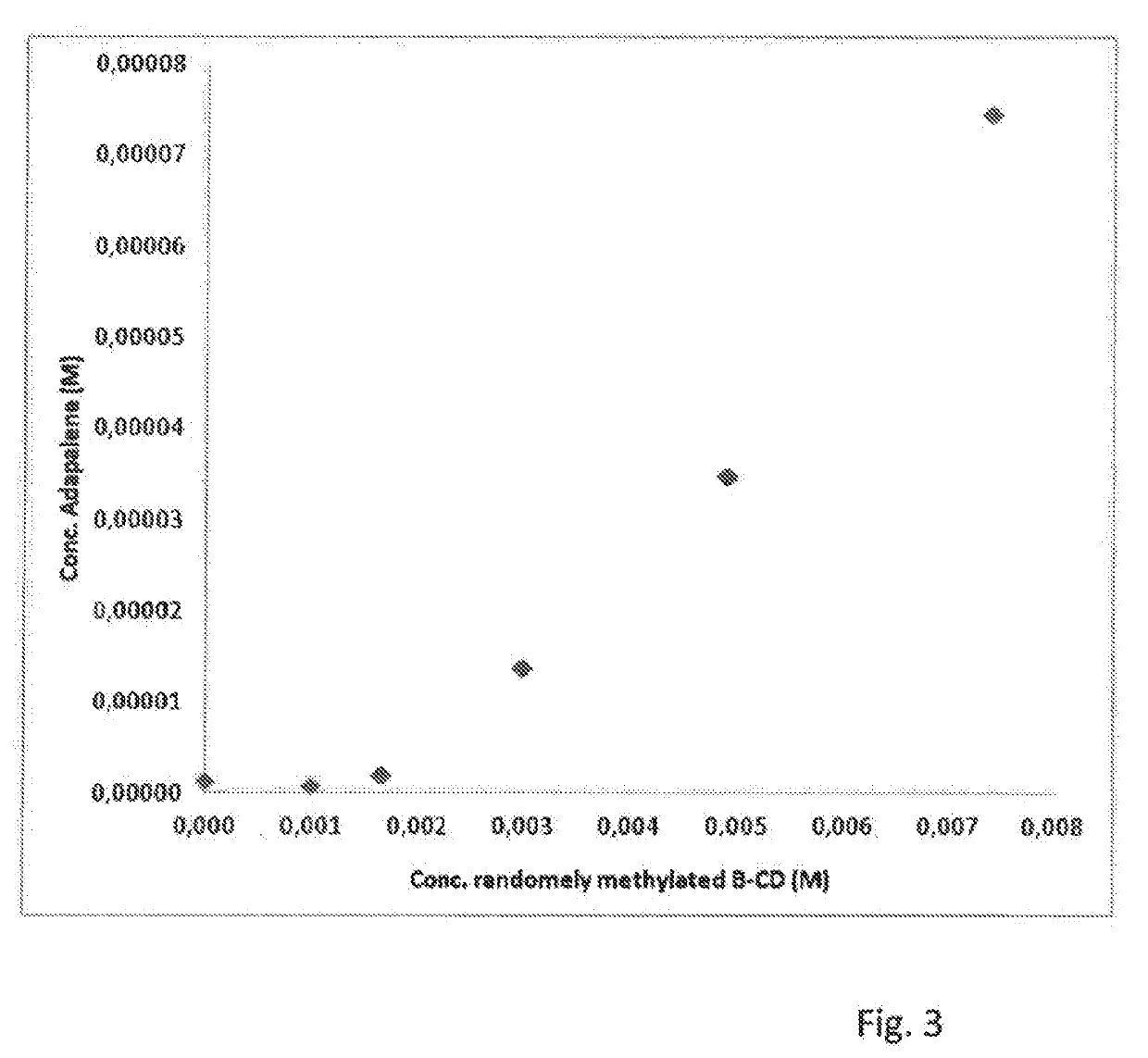Cyclodextrin-grafted cross-linked hyaluronic acid complexed with active drug substances and uses thereof
a technology of hyaluronic acid and cross-linked hyaluronic acid, which is applied in the direction of pharmaceutical non-active ingredients, pharmaceutical delivery mechanisms, organic active ingredients, etc., can solve the problems affecting the liquid retention capacity of hyaluronic acid molecules, and achieve the effect of increasing the temporal control of the release of the pharmaceutical agent, hyaluronic acid, and reducing the migration of cyclodextrin
- Summary
- Abstract
- Description
- Claims
- Application Information
AI Technical Summary
Benefits of technology
Problems solved by technology
Method used
Image
Examples
example 1
of 3-Amino-Gamma-CD to Dry Cross-Linked HA Powder
[0108]DMTMM (0.3 g) and 3-amino-gamma-CD (0.8 g) are dissolved in phosphate-buffered saline (PBS) (25 mL), and the pH of the solution is adjusted to approx. 6.5 (1.2 M HCl). This solution is added to dry cross-linked HA powder (0.5 g) and then stirred gently. The reaction is heated to 45° C. for 24 h and then allowed to cool down to room temperature. The gel is washed twice with PBS (15 mL / g gel) and filtrated. The gel is then washed three times with ethanol 70% (15 mL / g gel) and the solution is discarded. Finally, pure ethanol is added to the gel and filtrated and dried under vacuum to yield the final material.
example 2
of 3-Amino-Beta-CD to Dry Cross-Linked HA Powder
[0109]DMTMM (0.2 g) and 3-amino-beta-CD (0.35 g) were dissolved in PBS (12.5 mL), and the pH of the solution was adjusted to approx. 6.5 (1.2 M HCl). This solution was added to dry ether cross-linked HA powder (0.3 g) and was stirred gently. The reaction was heated to 45° C. for 24 h and then allowed to cool down to room temperature. The gel was washed twice with PBS (15 mL / g gel) and filtrated. The gel was washed three times with ethanol 70% (15 mL / g gel) and the solution was discarded. Finally, pure ethanol was added to the gel and filtrated and dried under vacuum to yield the final material.
[0110]The HA polymer was degraded into oligosaccharides to enable quantitative NMR analysis. 40-60 μL of a solution with Chondroitinase ABC from Proteus vulgaris was added to the gel sample which was further mixed and put on 37° C. incubation with gentle shaking for 24 h. After the incubation the degraded gel sample was lyophilized and re dissolv...
example 3
of 6-Amino-Beta-CD to Dry Ether Cross-Linked HA Powder
[0112]DMTMM (0.24 g) and 6-amino-beta-CD (0.3 g) were dissolved in PBS (15 mL), and the pH of the solution was adjusted to approx. 6.5 (1.2 M HCl). This solution was added to dry ether cross-linked HA powder (0.3 g) and was stirred gently. The reaction was heated to 45° C. for 24 h and then allowed to cool down to room temperature. The gel was washed twice with PBS (15 mL / g gel) and filtrated. The gel was washed three times with ethanol 70% (15 mL / g gel) and the solution was discarded. Finally, pure ethanol was added to the gel and filtrated and dried under vacuum to yield the final material.
[0113]The HA polymer was degraded into oligosaccharides, and a 1D 1H quantitative NMR experiment was performed as set out in Example 2. The resulting spectrum was analyzed for determination of MoDCDx / HAdi. The modification (cyclodextrin over disaccharide; MODCDx / HAdi) was 22% determined by 1H-NMR of enzymatically degraded gel.
PUM
| Property | Measurement | Unit |
|---|---|---|
| size | aaaaa | aaaaa |
| molecular weights | aaaaa | aaaaa |
| concentration | aaaaa | aaaaa |
Abstract
Description
Claims
Application Information
 Login to View More
Login to View More - R&D
- Intellectual Property
- Life Sciences
- Materials
- Tech Scout
- Unparalleled Data Quality
- Higher Quality Content
- 60% Fewer Hallucinations
Browse by: Latest US Patents, China's latest patents, Technical Efficacy Thesaurus, Application Domain, Technology Topic, Popular Technical Reports.
© 2025 PatSnap. All rights reserved.Legal|Privacy policy|Modern Slavery Act Transparency Statement|Sitemap|About US| Contact US: help@patsnap.com



